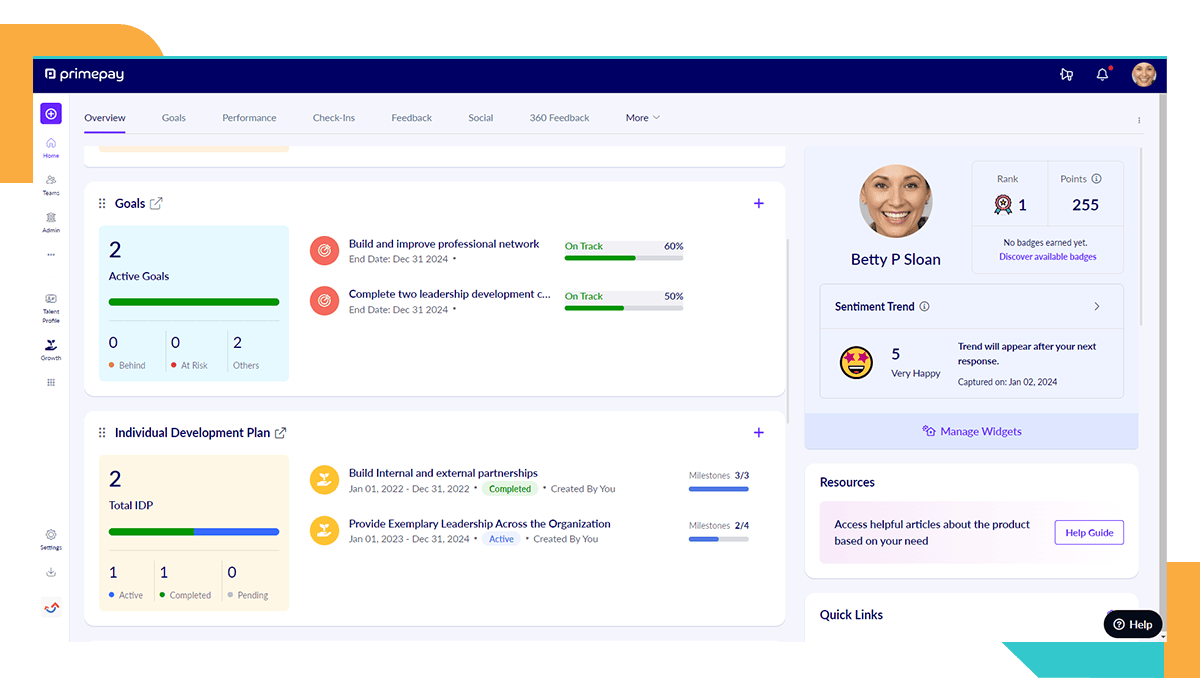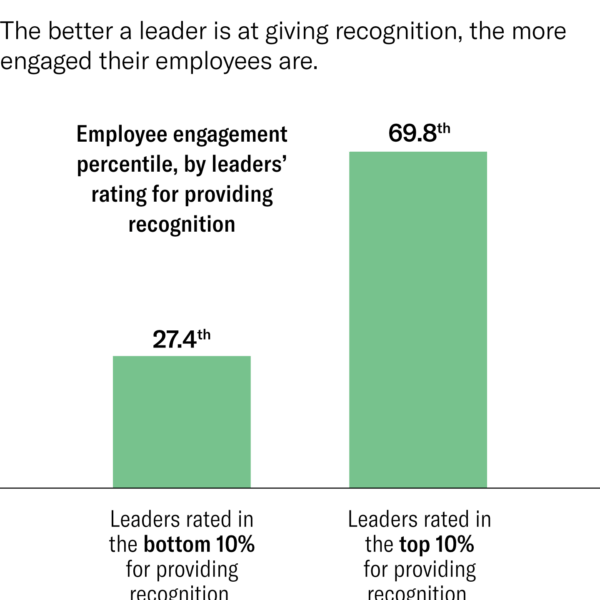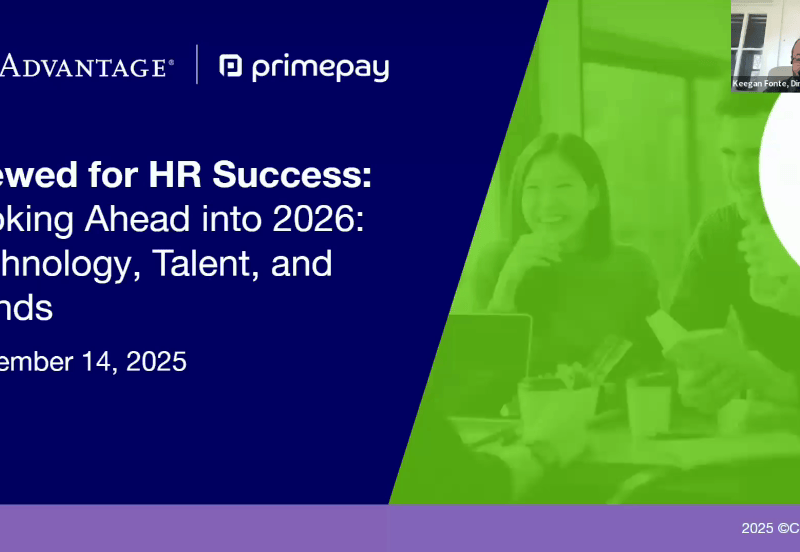Are you making changes to your performance management? If so, you’re in the majority – 81% of HR leaders are overhauling their current strategy to make conversations more meaningful, accurate, and fair.
This statistic comes as no surprise, as in recent years the role and focus of HR have shifted from being more process-focused to being people-focused. And since HR teams own and transform various policies (such as DEI, parental leave, and workplace flexibility), it makes sense that performance management is in line for a refresh.
To create an employee-centric approach to annual performance reviews, embrace a holistic strategy to empower your people, drive employee engagement, and create a productive organization.
4 Steps to Hosting Holistic Performance Conversations
Many companies conduct annual performance reviews to evaluate their employees’ performance over the past year. These reviews:
- Highlight successes
- Pinpoint areas that require enhancement
- Form the cornerstone for setting goals and addressing weaknesses
- Align individual objectives with those of the company
Many people associate these meetings with metrics and appraisals, as performance reports provide an opportunity to evaluate successes, identify improvement areas, and set future goals.
However, there’s a deeper narrative that often goes unexplored. How do employees interact with colleagues? Navigate problems? Model company values?
When you use a holistic approach to year-end performance reviews – acknowledging soft skills, gathering feedback from multiple sources, and providing continued support – you signal to employees that you care about them as growing professionals and people.
So whether you’re building a new process or revamping your current performance management strategy, below are four steps to promote a holistic approach to year-end reviews.
1. Determine and Communicate Your Year-End Review Strategy
What’s an HR leader’s number one concern regarding performance reviews? You’d be right if you guessed ensuring the process was fair and equitable.
That’s because equitable year-end reviews aren’t just about doing the right thing but also creating a culture of trust, transparency, and consistency across the organization.
There are many ways to work towards conducting fair performance reporting, and many aspects start with the foundations of your performance strategy.
Consider:
- Who is doing the actual reviewing. Some organizations opt for manager-only feedback, while others (like Netflix) use 360 reviews, where peers also review their teammates.
- When reviews take place. While the most common option is the year-end performance review, some companies prefer discussing employees’ current performance on work anniversaries. Others go one step further and schedule quarterly performance reviews in addition to annual ones, citing that routine checks provide more timely and actionable feedback.
- How you will train managers. Numerous studies prove that managers make or break an employee’s experience, and it’s no different when it comes to performance reviews. Unfortunately, only 30% of direct reports think their manager is a good coach, so it’s essential to equip managers with the proper training to support their team.
- What performance technology to use. Hopefully, manually organizing and filing individual employee folders is a distant memory for you. Not only is using performance management technology more efficient, but it can also positively affect perceptions of fairness. Choose a tool that not only houses your employee data but also allows you to run reports to slice and dice your data to ensure equitable performance decisions (like raises, bonuses, and promotions).
- How you’ll communicate your decision. However (and whenever) you choose to host performance reviews, it’s best to share these processes frequently with employees so that everyone knows what to expect and the process runs as smoothly as possible.

Keep your year-end reviews and performance reports in one place for a more organized and efficient performance review experience.
2. Include Soft Skills in Your Evaluations
Evaluating employees’ past and current performance is essential to the review process. However, many performance conversations focus solely on data, so you may not be tapping into your people’s maximum potential.
That’s because focusing on soft skills and personal growth will also help teams succeed in communication, collaboration, and time management. Furthermore, holistic performance reporting helps recognize employee strengths and areas for advancement and encourages managers to provide specific feedback to foster overall employee growth.
Consider incorporating the following soft skills into your performance reporting for a more holistic review of employees:
- Teamwork and collaboration: Does the employee willingly assist others? Do they consistently work toward team objectives? Are they proactive collaborators? Because cooperation and collaboration are integral to any successful organization, evaluating employees’ willingness and attitude towards teamwork and collaboration is helpful.
- Problem-solving abilities: Does the employee actively engage in problem-solving conversations or wait for a colleague to present a solution? Note that practical evaluation of problem-solving skills involves assessing a range of criteria (including analytical thinking, creativity, problem identification, and solution development), so there are a lot of possibilities to weave this topic into your year-end reviews.
- Reliability and time management: Does the employee meet deadlines and maintain their schedule? Can you rely on them to complete a task? Will they ask for help along the way if needed? A strong performance in this area usually means high productivity and completion of goals. But more than that, reliable employees also help build trust with others and model a preferred work ethic. On the other hand, poor reliability and time management adversely impact team performance, leading to delays in project completion and decreased productivity.
Lastly – but perhaps most importantly – is the embodiment of company values. Your company values shouldn’t be an afterthought but guiding principles as to how your organization and people act and make decisions.
Sharon Rusinowitz, Director of Content Marketing at ChartHop, explains how her organization has embraced this concept for its quarterly performance reviews. She explains: “Our company values are front and center in everything we do, including performance reviews. We use our values as a lens to measure performance, which helps ensure consistency across the entire organization and keeps everyone aligned to our company culture. For example, we do this by highlighting areas of strength and improvement based on our values. This framework is helpful to me as a manager because it provides both me and my team with clarity around what we’re looking for and it offers consistent direction over time.”
3. Encourage Well-Rounded Plans for the Future
There’s a reason many companies hold year-end reviews in late Q4 or early Q1. Besides everyone being in the goal-setting spirit (hello, New Year’s Resolutions), it’s easier to create individual plans while the company is rolling out its own vision.
When creating holistic plans, these conversations must encourage employees’ personal and professional growth. For well-rounded discussions, managers should:
- Celebrate wins and strong performance areas. This aspect is a norm for annual performance reviews, but there’s no need for these wins just to be data-driven. Instead, consider adding other wins – such as recognizing strong cross-departmental collaboration – that added to the employee’s success. These conversations are easy to build on and will help create a plan for continued success.
- Reflect on previous goals. When pinpointing growth areas, it’s important to first consider the actual goal at hand. At Whitebox Real Estate, president and co-founder Grant Pruitt uses quarterly performance reviews to dig into goals progress and completion. He wants employees to use this time to reflect and ask questions such as: “Was it an achievable goal? Realistic? If it was, then what do we need to do to make sure we don’t miss it next time?” Ultimately, this collaborative approach to goal setting fosters a culture of transparency and mutual growth and will benefit teams, managers, and individual employees.
- Encourage stretch goals. It’s important to align individual goals with company objectives, but it’s also critical for employees to set “stretch goals that build on their strengths and passions.” Stretch goals can be specific to performance – such as closing X deals a quarter – or more personal, such as creating an organization system for files and other downloaded assets.
- Discuss long-term career goals. In addition to determining OKRs for the next quarter or year, managers should also inquire about employees’ long-term career goals. Over at Deloitte, a senior manager notes her recent shift from focusing on OKRs and day-to-day tasks to weaving in the development piece when she checks in with her direct reports. She explains: “I’m [now] taking the time, even if it’s just ten minutes, to talk about their personal development, what’s happening with their goals, with their strategic initiatives in terms of where their careers want to go.”
- Offer opportunities for professional growth. According to a 2022 McKinsey study, the top reason people left a job was the lack of career development and advancement. Thus, to retain your people and create an ideal employee experience, it’s best to offer frequent opportunities for your employees to grow. Consider offering learning stipends, hosting speakers, or providing classes targeted to employee goals.

Equip your people with a learning hub where you can assign, suggest, and track their professional development. These records not only organize and track compliance tasks but also provide learning opportunities for your employees.
4. Use Continuous Performance Management for Follow-Up Conversations
It’s safe to say your performance management shouldn’t just consist of a yearly meeting. Instead, your annual performance reviews should be part of your continuous performance management strategy.
The frequency of 1:1 meetings varies depending on the organization, but conducting them at least once a month is recommended. These performance conversations help managers collaborate with direct reports, aid them in tackling performance difficulties, and foster a cycle of continuous improvement. Moreover, ongoing feedback reduces recency bias come performance review time, as conversations are documented to provide a more holistic picture of the employee’s performance.
Marketing and Employment Brand Consultant Michael Lipe notes that ongoing conversations help ensure success and increase transparency. He says annual performance reviews often feel like a big reveal, but they shouldn’t be that way. Lipe suggests: “Performance reviews should be the culmination of dozens of small conversations, not a single, nerve-wracking one. Each conversation should lead to a shared understanding of progress and next steps. This way, there are no surprises at the end of the year, only a sense of accomplishment and a clear path forward.”

Acknowledging your employees’ wins regularly (and not just in their year-end review) is essential. Data shows that regular feedback and recognition leads to increased engagement and retention.
Invest in Your People for Organizational Growth
Annual reviews play a crucial role in organizational growth and development. Organizations can ensure a productive and prosperous future by setting clear goals, identifying areas for improvement, evaluating critical skills, and navigating remote management challenges.
Remember, the key to a successful performance review is not just in conducting the review but in the follow-up and implementation of feedback. By taking a holistic approach and investing in your people, you’ll not only create a strong employee experience, but set your organization up for success in the long run.









